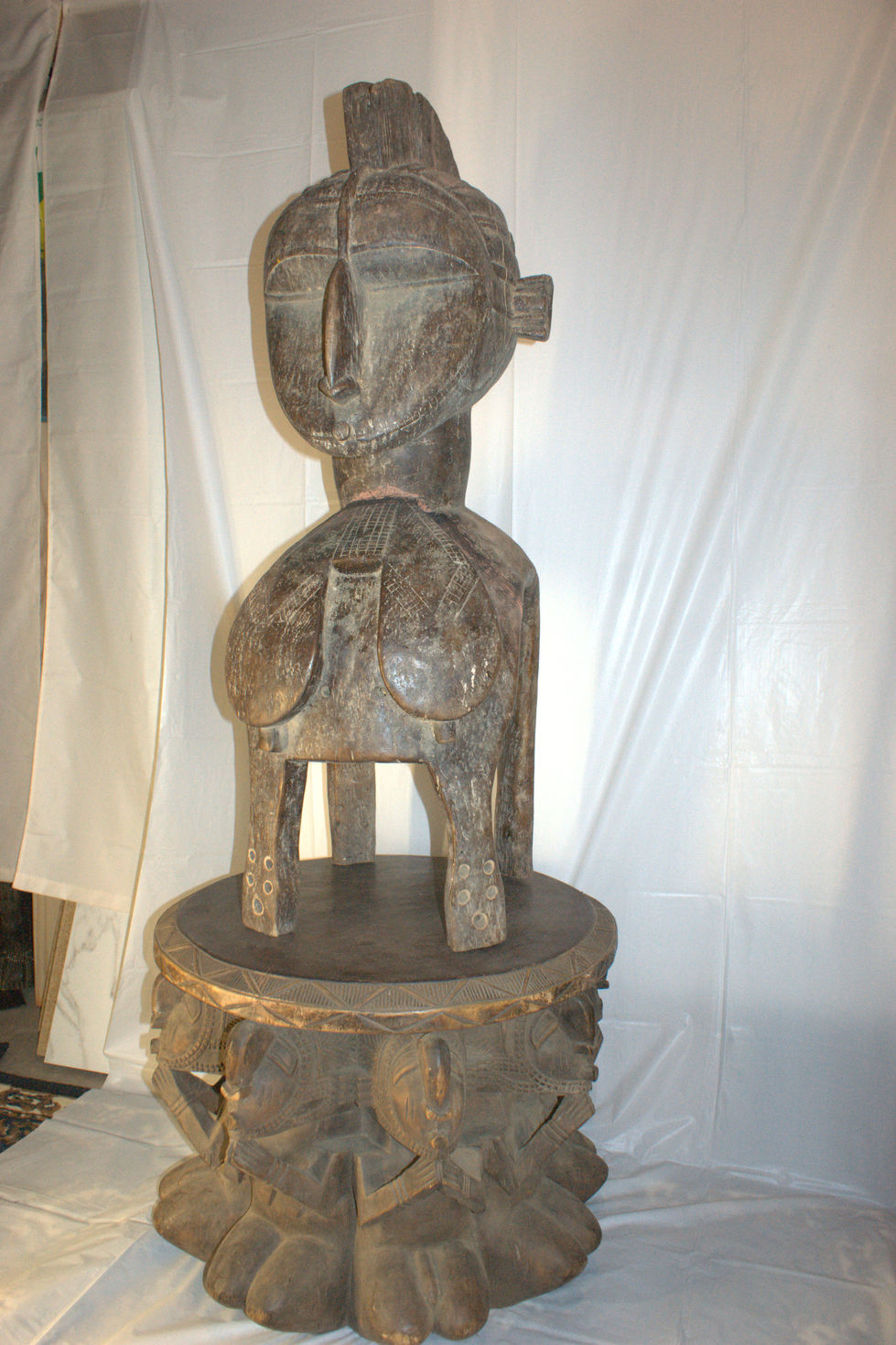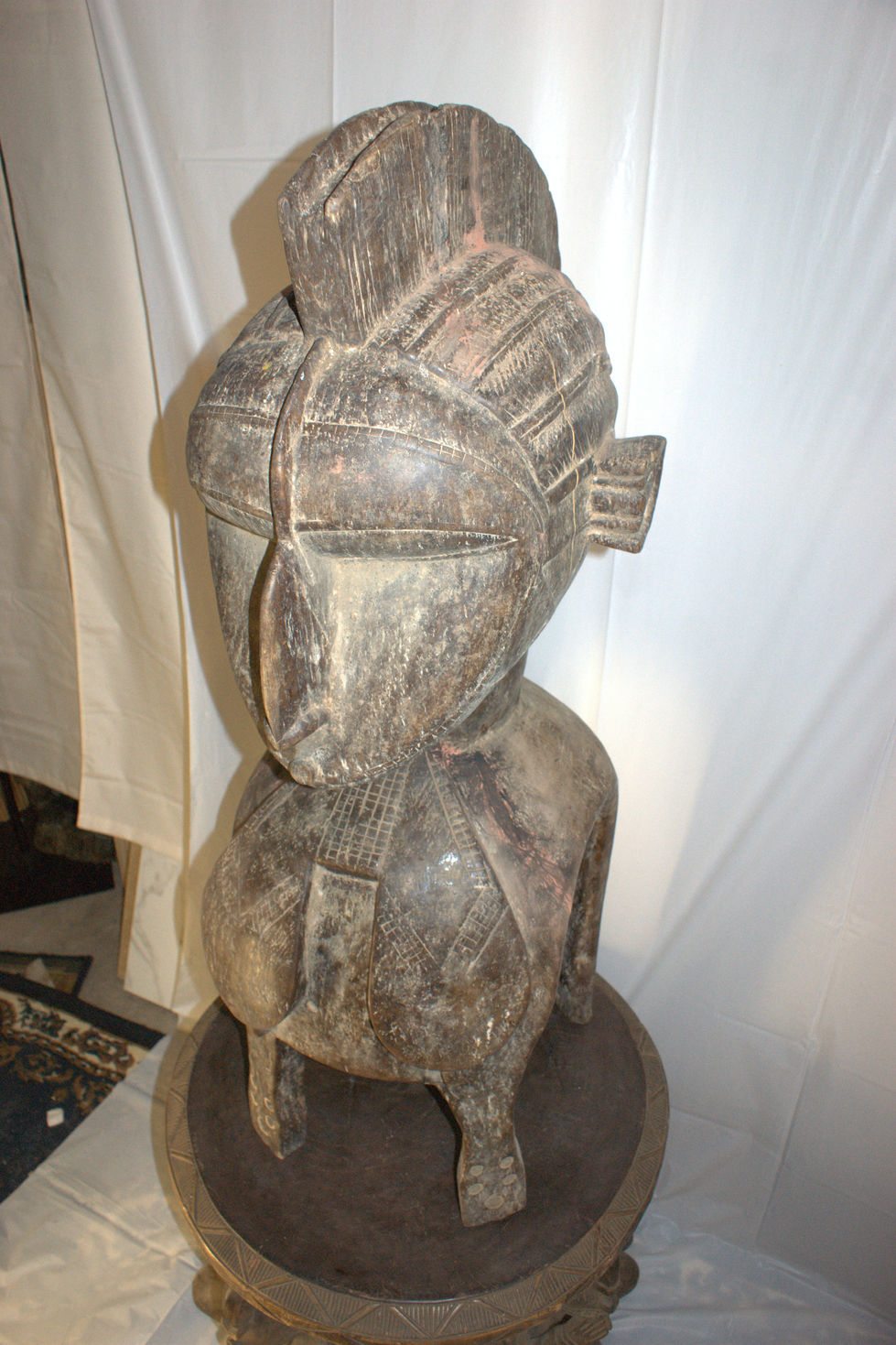W🌍RLD HISTORY
Create Your First Project
Start adding your projects to your portfolio. Click on "Manage Projects" to get started
D’mba (Nimba) Shoulder Mask
Project type
Mask
Name
D’mba (Nimba) Shoulder Mask – Baga People, Guinea
History
The D’mba, also known as Nimba, is one of the most iconic ceremonial sculptures of the Baga people from coastal Guinea in West Africa. Traditionally, this large wooden mask was worn on the shoulders during important community ceremonies. The form, featuring exaggerated feminine characteristics such as pendulous breasts, has been carved by the Baga for centuries, with the earliest known examples dating back to the 19th century.
Cultural Significance
Fertility and Agricultural Prosperity: The D’mba mask embodies the idealized mother figure, symbolizing fertility, abundance, and agricultural growth. It is performed to ensure a good harvest and the community’s prosperity.
Community Harmony: Used in rituals marking planting and harvest seasons, weddings, and other important social events, the mask represents unity and cultural continuity.
Moral and Social Education: During ceremonies, the mask serves as a moral and educational symbol, embodying respect for elders and traditional values.
Symbolism and Design
Pendulous Breasts: Represent motherhood, fertility, and nourishment, reflecting the central role of women as life-givers and nurturers.
Scarification Patterns: The incised geometric motifs across the head and torso signify beauty, maturity, and cultural identity within Baga society.
Helmet Form: This mask is worn on the shoulders rather than the face, towering above the dancer to give an imposing presence during performances.
Stylized Features: The large head, long nose, and calm, symmetrical facial features emphasize dignity and timeless beauty rather than realism.
The D’mba shoulder mask remains a symbol of fertility, strength, and the sustaining power of women within the Baga culture, while also being celebrated as a masterpiece of African sculpture worldwide.









